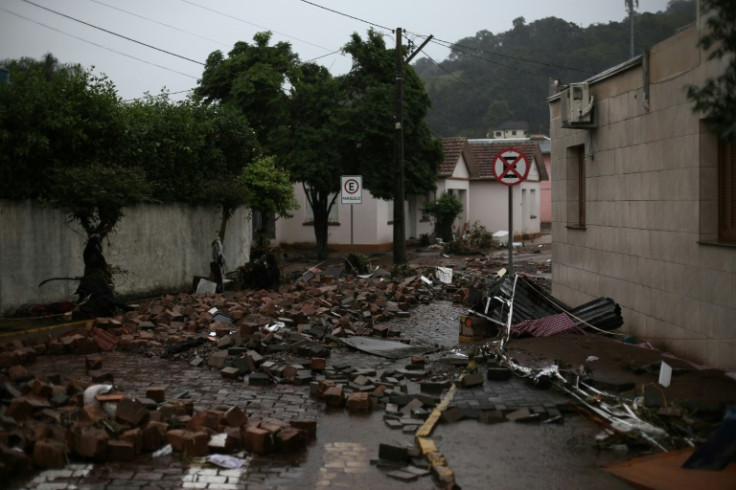
Brazilian President Luiz Inacio Lula da Silva visited the country's south Thursday, where the death toll from floods caused by torrential rains has risen to 13.
As rescuers continued the search for some 21 people reported missing among the ruins of collapsed homes, bridges and roads, authorities in the state of Rio Grande do Sul have reported a state of emergency.
Floods and landslides caused by a week of storms hit nearly 150 municipalities in the state, also injuring at least a dozen people and displacing close to 10,000.
Governor Eduardo Leite said the state was dealing with "the worst disaster in (its) history."
Lula, who has blamed the torrent on climate change, arrived in the town of Santa Maria in the morning with a delegation of ministers, and held a working meeting with Leite and other officials to coordinate joint rescue efforts, the government said.
The federal government has made available 12 aircraft, 45 vehicles and 12 boats as well as 626 soldiers to help clear roads, distribute food, water and mattresses, and set up shelters, a press statement said.
As the rains continued, forecasts warned the state's main Guaiba River, which has already overflowed its banks in some areas, would reach an extraordinary level of three meters (9.8 feet) by Thursday and four meters the next day.
Entire communities in Rio Grande do Sul have been completely cut off as persistent rains have destroyed bridges and blocked roads, and left towns without even telephone or internet services.
Rescuers and soldiers have been scrambling to free families trapped in their homes, many stuck on rooftops to escape rising waters.
Authorities have urged people to avoid areas along state highways due to a risk of mudslides, and those who live near rivers or on hillsides to evacuate.
Hundreds of thousands of people have been left without access to electricity and drinking water, and classes were suspended state-wide.
On Wednesday, state's deputy governor, Gabriel Souza, said damages have been estimated at $20 million.
Mayor Sandra Backes of Sinimbu said the situation in her town was "a nightmare."
"Sinimbu is like a war zone, completely destroyed... All the stores, businesses, supermarkets -- everything is devastated," she said in a video posted on Instagram.
Elsewhere, in Santa Cruz do Sul, lifeguards used boats to transport residents, many of them children, to safety.
The region's rivers had already been swollen from previous storms.
Last September at least 31 people died as a cyclone hit the state.
South America's largest country has suffered a string of recent extreme weather events, which experts say are made more likely by climate change.
The floods came amid a cold front battering the south and southeast, following on a wave of extreme heat.








